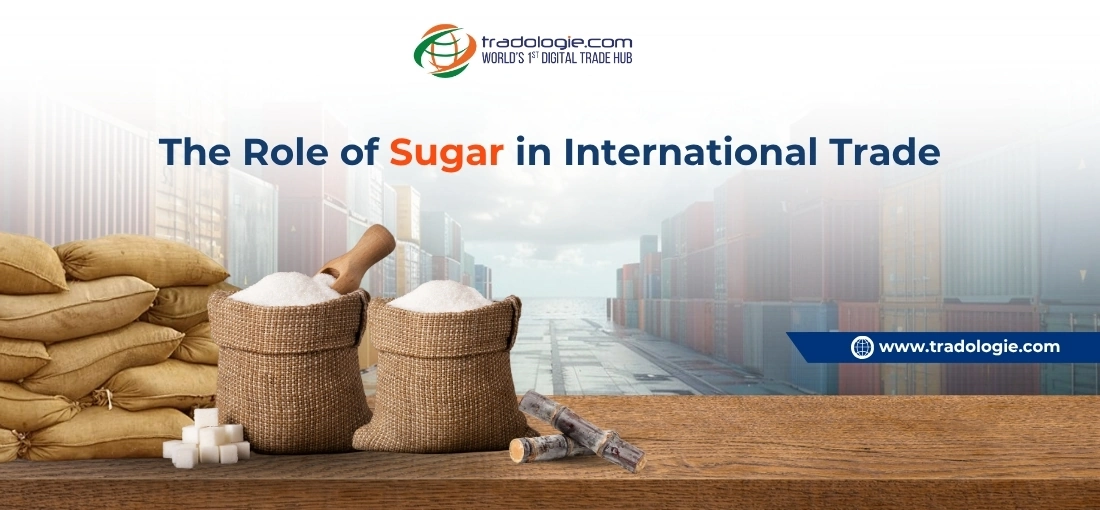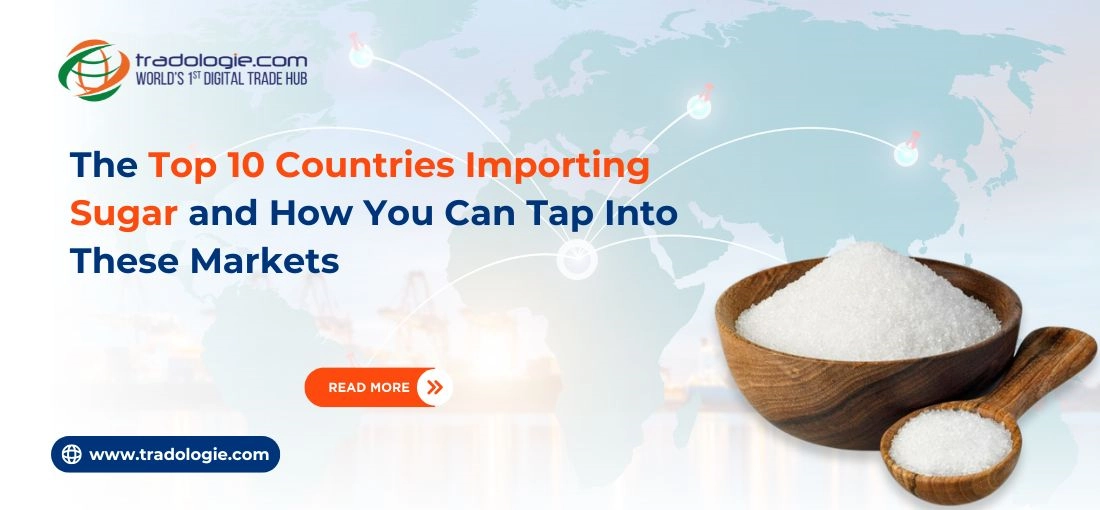The Role of Sugar in International Trade: Key Markets and Trends
Sugar's Enduring Global Trade Relevance
Sugar has held intrinsic value not only as a dietary staple but also as a globally exchanged agricultural commodity since antiquity. The commodity has traversed civilizational boundaries and commanded economic influence from early trade caravans of the Arab world to the transatlantic sugar triangle.
In contemporary trade dynamics, sugar remains a vital commodity underpinning food-processing sectors, agro-linked industries, and national economies. Sugar exporters form a vital part of its global trade economy and cater to the global needs.
Market Size and Trade Footprint
In 2023, the global sugar trade was valued at approximately USD 66.39 billion in 2023 according to grand views research, reinforcing its weight in international agri-commodities trade. The market is projected to reach USD 102.32 billion by 2030 according to grand views research.
The trade flows have grown in complexity, with refined sugar, raw cane sugar, and sugar-based derivatives circulating between exporting and importing blocks driven by seasonal surpluses, agro-climatic advantages, and processing capacity.
Leading Sugar Exporters
Export leadership in sugar remains consolidated among a few key economies, with Brazil continuing to dominate the landscape. The top sugar exporters are as follows.
- Brazil: USD 18.84 billion (23.4%)
- Thailand: USD 4.50 billion (6.6%)
- India: USD 4.27 billion (6.3%)
- Germany: USD 3.97 billion (5.8%)
- China: USD 3.35 billion (4.4%)
- France: USD 2.90 billion (4.3%)
- USA: USD 3.00 billion (4%)
- Netherlands: USD 2.45 billion (3.6%)
- Mexico: USD 2.33 billion (3.4%)
- Belgium: USD 2.13 billion (3.1%)
Brazil's dominance as a top sugar exporter is because of its highly mechanized sugarcane farming, vertically integrated milling infrastructure, and low-cost production infrastructure. Thailand enjoys favourable climatic conditions and government subsidies. India's position reflects both high domestic output and scale-driven export capabilities on the other hand.
Diversified Industrial Utility Beyond Household Use
While traditionally associated with direct consumption, sugar has a wide-ranging industrial utility. It is extensively utilized in:
- Processed foods and beverages: carbonated drinks, confectionery, dairy products, and sauces.
- Pharmaceuticals: for syrups, tablets, and fermentation media.
- Bioethanol and renewable fuels: especially in Brazil and India where sugarcane-derived ethanol constitutes a strategic fuel alternative.
- Bakery and patisserie industries: as a core texturizing and browning agent.
- Chemical derivatives: such as citric acid, lactic acid, and bioplastics.
This diverse downstream integration ensures that sugar remains a structurally important commodity across global industrial value chains.
Major Importing Economies
Import demand is primarily concentrated in nations with limited domestic cultivation or seasonal deficits. Based on data from Chinimandi, the top sugar-importing nations are:
- Indonesia
- China
- USA
- Malaysia
- Italy
- South Korea
- Algeria
- United Kingdom
- United Arab Emirates
- Bangladesh
These nations import sugar for large-scale industrial usage, especially in processed food, beverage manufacturing, and ethanol blending programs. The U.S. and China, despite being domestic producers, remain consistent importers due to seasonal demand-supply mismatches and product-type preferences (e.g., refined vs. raw).
Recent Trade Disruptions and Developments
India's Export Restrictions and Their Market Impact
India, historically among the top three exporters, imposed stringent curbs on sugar exports beginning October 2023. The rationale was centered on securing domestic availability and containing food inflation pressures. For global buyers, especially in Asia and Africa who heavily rely on Indian-origin sugar for its pricing competitiveness and quality parity, this created substantial procurement headwinds.
However, forward-looking estimates for the 2025/26 season signal a reversal in this restrictive trajectory. Favorable monsoon conditions and increased sugarcane acreage are expected to lead to a recovery in output. Should this trajectory hold, Indian policymakers may revisit their export policy framework, potentially easing the current caps and re-integrating India more substantially into global supply circuits.
Thailand's Compensatory Production Spike
Thailand has registered a noteworthy increase in production during the 2023–2024 cycle, partially offsetting the reduced volumes from India. The country's government-backed price support programs and improved mill efficiencies have enabled consistent export flows into Southeast Asia, the Middle East, and select African markets. This counterbalance has stabilized short-term supply volatility to an extent but not without price dislocations across some import-dependent economies.
Outlook and Strategic Considerations
The international sugar trade is entering a phase marked by consolidation, supply-side recalibration, and evolving consumption patterns. While Brazil and Thailand are expected to maintain a stronghold, India’s return to global markets could bring additional equilibrium. Buyers, particularly large-scale food processors and industrial blenders, will continue to seek reliable origin sources, trade assurance mechanisms, and logistically viable corridors to ensure uninterrupted supply continuity.
Conclusion
Sugar's role in international trade continues to be economically consequential, cutting across dietary, industrial, and renewable energy applications. While geopolitical restrictions and climate-driven volatility persist as structural challenges, the resilience of global supply chains and the adaptive strategies of importing nations have sustained trade momentum. The commodity’s deep integration into food security and industrial production systems ensures its continued relevance in international B2B trade ecosystems. As policy stances evolve and production cycles stabilize, stakeholders should recalibrate sourcing strategies to align with both market realities and future supply-demand shifts.



